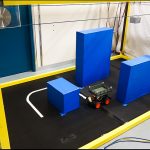
Schnelle Trajektorienplanung für Robotersysteme unter Berücksichtigung von Hindernissen und dynamisch bewegten Zielen
Diese Forschung befasst sich mit der Entwicklung neuer Methoden zur schnellen Trajektorienplanung in geclusterten Umgebungen mit dynamisch bewegten Objekten. Simulationsergebnisse und Experimente demonstrieren die Methoden auf einem Portalkran im Labormaßstab. Weiterlesen →

Optimale TCP- und Roboterpositionierung für komplexe kontinuerliche Pfade
In dieser Arbeit wird die optimale Werkzeuggeometrie an einem Industrieroboter anhand der auszuführenden Endeffektor-Pfade berechnet. Weiterlesen →
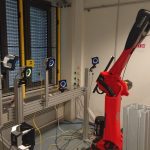
Beobachterbasierte iterativ lernende Regelung zur Verbesserung der Bahngenauigkeit von Industrierobotern2018 - 2021
Für Bearbeitungsaufgaben mit Robotern ist die Bahngenauigkeit ein wesentliches Leistungskriterium. Durch ungleichmäßige Reibung, nicht konstantes Übersetzungsverhältnis der Getriebe und variable Steifigkeit der Roboterachsen entstehen bei Industrierobotern Bahnabweichungen, die für hochgenaue Prozesse ausgeglichen werden müssen. Im Zuge des Projekts sollen geeignete Robotermodelle, Beobachter- und Regelungsstrategien entworfen werden, mit denen die wachsenden Genauigkeitsanforderungen bei industriellen Fertigungsprozessen erreicht werden können. Weiterlesen →
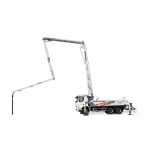
Zeitoptimaler Aufbau einer mobilen Betonpumpe
Das Interesse an einem autonomen Betrieb großer Baustellenfahrzeuge stieg in den letzten Jahren stark an. Ziel dieses Projekts, ist eine Strategie zu entwickeln um zeitoptimale Bewegungen für den Ausleger eine mobilen Autobetonpumpe zu berechnen. Dabei werden verschiedene Hindernisse im Arbeitsbereich systematisch berücksichtigt. Weiterlesen →

Robotisches Bekleben von 3D-Objekten
Dieses Projekt behandelt einen flexiblen Ansatz für das impedanzgeregelte faltenfreie Aufkleben von zugeschnittenen Klebebändern auf Freiform-3D-Oberflächen. Weiterlesen →
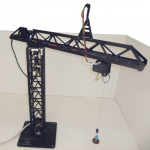
Optimierungsbasierte Regelungsmethoden an einem Turmdrehkran im Labormaßstab
Turmdrehkräne sind sehr weit verbreitet und stellen ein interessantes Anwendungsgebiet für die Regelungstechnik dar. Eine wichtige Aufgabenstellung ist das Positionieren des Hakens unter gleichzeitiger Minimierung von Pendelbewegungen des Seils an der Sollposition. Eine weitere mögliche Zielsetzung ist die Unterdrückung von Störungen wie zum Beispiel Windkräfte und unterschiedlich große Lastmassen. Für die Erfüllung dieser und weiterer Aufgabenstellungen werden geeignete Regelungskonzepte entwickelt und an einem Turmdrehkran im Labormaßstab getestet. Der Schwerpunkt liegt dabei auf optimierungsbasierten Ansätzen, im Speziellen aus dem Bereich der modellprädiktiven Regelung (MPC). Weiterlesen →

Hol-I-Wood PR
Die Korrektur von natürlichen Holzdefekten, wie z.B. Harztaschen oder Astlöchern, unterbricht die automatisierten Produktionsabläufe in der Holzindustrie. Dabei ist die menschliche Arbeitskraft insbesondere für die Detektion und Klassifikation von Holzdefekten sowie für deren Reparatur erforderlich. Diese für den Menschen monotone und mühselige Arbeit wird im Rahmen des Projekts Hol-I-Wood PR automatisiert. Diese innovative so genannte "Wood Patching"-Anlage wird in die Schalungsplattenproduktion unserer Partner integriert. Weiterlesen →
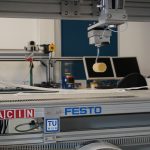
Automatisierte Handhabung biegeschlaffer Materialien
Im Rahmen dieses Projekts wird prototypisch ein Handhabungssystem aufgebaut und das Potential der modernen modellbasierten Regelungstechnik für die Handhabung biegeschlaffer Materialien, wie sie die Halbzeuge darstellen, untersucht. Die erarbeiteten Konzepte sind übertragbar auf zahlreiche andere Fragestellungen, wie zum Beispiel dem automatisierten Aufkleben von großflächigen Folien, der Handhabung von Textilien, etc. Weiterlesen →